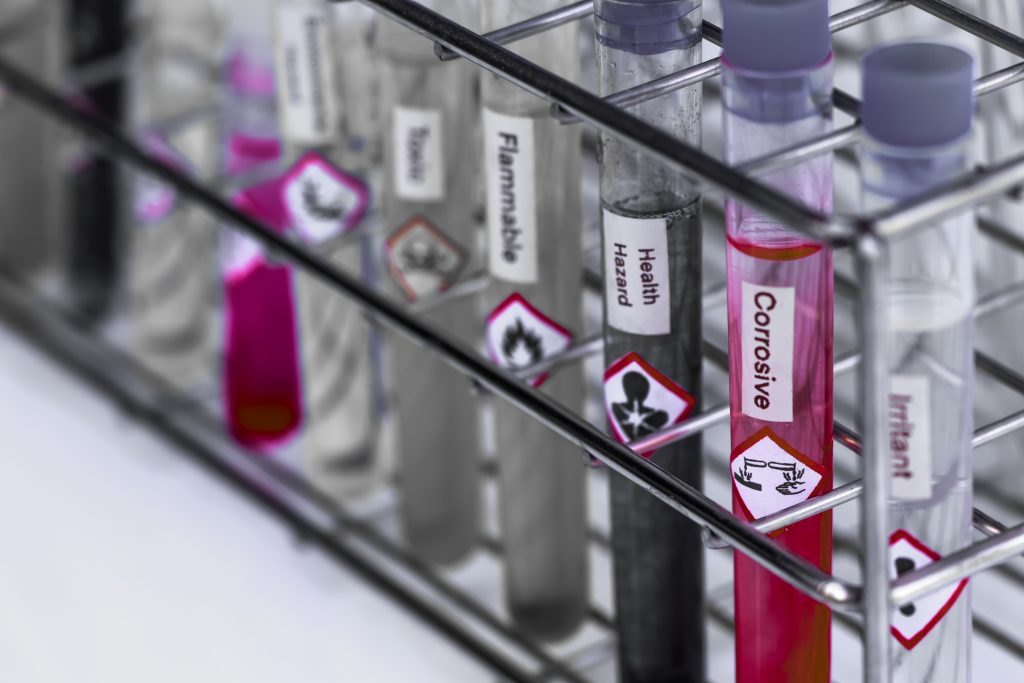Introduction to TPCH Regulations
TPCH (Toxics in Packaging Clearinghouse) was established in 1992. Its predecessor was CONEG. It is responsible for promoting the “Model Toxics in Packaging Legislation” in various states in the United States and supporting & coordinating the implementation of the regulation. Due to the successful promotion of this regulation by TPCH, people often refer to the US regulations for the control of hazardous substances in packaging materials as TPCH.
The TPCH regulation restricts the entire packaging supply chain, including manufacturers, suppliers of packaging and packaging components, and manufacturers or distributors of products that use packaging. This model regulation needs to be adopted by each state in the United States before it will take effect in the corresponding state. TPCH regulation have been adopted by 19 states in the United States, and packaging materials exported to these 19 states need to meet TPCH requirements. These 19 states include: California, Connecticut, Florida, Georgia, Illinois, Iowa, Maryland, Maine, Minnesota, Missouri, New Hampshire, New Jersey, New York, Pennsylvania, Rhode Island, Vermont, Virginia, Washington and Wisconsin.
Package definition in TPCH regulation:
- A container providing a means of marketing, protection or handling of a product and shall include a unit package, an intermediate package and a shipping container as defined in American Society for Testing and Materials ASTM D996.
- Package shall also mean and include such unsealed receptacles as carrying cases, crates, cups, pails, rigid foil and other trays, wrappers and wrapping films, bags and tubs.
Packaging component definition in TPCH regulation:
- Any individual assembled part of a package such as, but not limited to, any interior or exterior blocking, bracing, cushioning, weatherproofing, exterior strapping, coatings, closures, inks and labels
- Tin-plated steel that meets the ASTM A623 shall be considered as a single package component.
- Electro-galvanized coated steel and hot dipped coated galvanized steel that meets the ASTM A653, ASTM A924, ASTM A879 and ASTM A591 shall be treated in the same manner as tin-plated steel.
2021 Update to TPCH
On February 16, 2021, the “Model Toxics in Packaging Legislation” was updated (TPCH regulation). The 2021 update included the addition of the class of perfluoroalkyl and polyfluoroalkyl substances (PFAS) and ortho-phthalates as regulated chemicals on the original four heavy metal requirements.
2021 update to TPCH regulation link: https://toxicsinpackaging.org/model-legislation/model/
| Restricted Substances | Requirements | Remark |
| Lead(Pb)、Cadmium(Cd)、Mercury(Hg)and Hexavalent chromium(Cr6+) | The sum of four heavy metals ≤ 100ppm(0.01%,by weight) | Prohibit the intentional use of four heavy metals in any finished package or packaging component. The sum of the concentration levels of four heavy metals incidentally present in any package or packaging component shall not exceed 100 parts per million by weight (0.01%) |
| Phthalates | The sum of phthalates ≤ 100ppm (0.01%, by weight) | Refers to all phthalate organic chemicals and contains 2 carbon chains in the ortho position. |
| Per-and polyfluoroalkyl substances (PFAS) | There shall be no detectable | Refers to all fluorinated organic chemicals containing at least one fully fluorinated carbon atom (-CF2-). |
Each state will add corresponding newly identified chemical substances of concern for control based on their own circumstances, and formal implementation will begin two years after the announcement.
TPCH Updated Exemptions
All packages and packaging components shall be subject to this Act, unless, an individual state adopts into their law, any or all of the below exemptions, which shall then apply only in that state.
- Packaging or packaging components that intentionally add lead, cadmium, mercury, or hexavalent chromium to comply with health or safety requirements under state or federal law may apply for an exemption from the state administrative agency.
- There is no feasible alternative, an exemption may be requested from the state administrative agency.
Identification and Prohibition of packaging chemicals of high concern in the updated regulation:
- A carcinogen, a reproductive or developmental toxicant or an endocrine disruptor; or Persistent, bioaccumulative and toxic (PBT); or Very persistent and very bioaccumulative (vPvB); or Persistent mobile and toxic (PMT); or Very persistent and very mobile (vPvM);
- A state administrative agency determines that there is strong and reliable scientific evidence that the chemical is a reproductive or developmental toxicant, an endocrine disruptor, or a human carcinogen;
- The state administrative agency determines that there is strong credible scientific evidence that the chemical meets one or more of the following additional criteria:
- The chemical has been found through biomonitoring studies to be present in human blood, human breast milk, human urine or other human bodily tissues or fluids;
- The chemical has been found through sampling and analysis to be present in packaging;
- The chemical has been added to or is present in a package.
TPCH Certificate of Compliance
A Certificate of Compliance stating that a package or packaging component is in compliance with the requirements of this Act shall be furnished by its manufacturer or supplier to the purchaser of the packaging or packaging component. Where compliance is achieved under any state exemption(s), the Certificate of Compliance shall state the specific basis upon which the exemption is claimed. Certificates must be supported by documentation demonstrating compliance (e.g. test reports).
Guidance Document for TPCH
In November 2023, TPCH issued guidance document on PFAS (perfluoroalkyl and polyfluoroalkyl substances) and Ortho-Phthalates in Packaging in Support of the 2021 Update to Toxics in Packaging Clearinghouse Model Legislation.
Guidance document link: https://toxicsinpackaging.org/guidance-for-tpch-2021-model-legislation-update/
The best source of information about whether a package contains intentionally added PFAS is likely to be the manufacturer or supplier of the packaging. To determine if PFAS is intentionally added to any of the materials in packaging/product, TPCH recommends the following three options:
- Ask suppliers for full material disclosure—a list of all the materials and substances in the components or material.
- Ask suppliers to disclose if PFAS chemicals are added. If full material disclosure isn’t possible, ask if any PFAS chemicals are added – they’re commonly used for oil and grease resistance. Some PFAS can also be added to plastics that are then added to packaging. Some high-density polyethylene (HDPE) and polypropylene (PP) containers are treated with fluorine gas and are known as ‘fluorinated containers.’ TPCH recommend ask if containers are fluorinated
- Look for third-party certifications.
The PFAS guidance document also points out that if the total fluorine content of the package/product or component is tested, and the results are less than 100 ppm and quality control criteria are met, it is considered that PFAS may not be intentionally added and would likely comply with TPCH restrictions in packaging. But guidance suggests that regardless of the total fluorine (TF) or total organic fluorine (TOF) levels tested, manufacturers should confirm information with their suppliers:
- Confirm PFAS isn’t intentionally added.
- Identify unintentional sources of PFAS so they can try to reduce or eliminate them.
- Identify sources of inorganic fluorine (which are not PFAS).
Below are Ortho-Phthalates that are commonly analyzed using SW 846 Method 8270
The guidance document also suggests Ortho-phthalates are a subset of semivolatile organic compounds, and as such can be determined using SW 846 Method 8270.
| Chemicals | Abbreviation | CAS Number |
| Bis(2-ethylhexyl)phthalate | DEHP | 117-81-7 |
| Butyl benzyl phthalate | BBP | 85-68-7 |
| Dicyclohexyl phthalate | DCHP | 84-61-7 |
| Diethyl phthalate | DEP | 84-66-2 |
| Diisobutyl phthalate | DIBP | 84-69-5 |
| Di-isodecyl phthalate | DIDP | 26761-40-0 |
| Di-isononyl phthalate | DINP | 28553-12-0 |
| Dimethyl phthalate | DMP | 131-11-3 |
| Di-n-butyl phthalate | DBP | 84-74-2 |
| Di-n-hexyl phthalate | DHEXP/DNHP | 84-75-3 |
| Di-n-octyl phthalate | DNOP | 117-84-0 |
| Dipentyl phthalate | DPENP/DnPP | 131-18-0 |
Compliance Recommendations in TPCH Guidance Document
Compliance recommendations for product manufacturers, brand owners and retailers of packaging materials are:
- Require Certificate of Compliance for all packaging materials and their components from all suppliers in any contract or bid specification.
- Ask for criteria used to determine compliance.
- If material formulations change from suppliers require updated information.
- Prepare Certificate of Compliance based on packaging supply chain information and identify appropriate authorized signer.
- Maintain records indefinitely by working with your Risk Management policies.
Compliance recommendations for packaging material formulators and suppliers are:
- Identify regulated materials in chemical formulation or in the supplied chemical inputs.
- Identify potential incidental additions of regulated chemicals or contaminants in the manufacturing process.
- Test for baseline information on regulated chemicals or contaminants.
- Require Certificate of Compliance for all packaging materials and their components from all suppliers in any contract or bid specification.
- Ask for criteria used to determine compliance.
- If material formulations change from suppliers require updated information.
- Prepare Certificate of Compliance based on packaging supply chain information and identify appropriate authorized signer.
- Maintain records indefinitely by working with your Risk Management policies

Bringing More Optimized User Experience and Efficient Services
CMA Testing today announced the launch of a revamped website. The new website uses the original URL (www.cmatesting.org) to provide customers with detailed information related to testing, inspection, and certification. Apart from a refreshed interface, the revamped website also offers an array of comprehensive service displays and optimizations. Whether you are looking for specific testing services, solutions, or learning about our latest updates, you can easily find the information you need. Currently, the new website is online. You are welcome to visit www.cmatesting.org to experience this new change.

On 13 October 2023, ASTM International has published a revised ASTM F963 Standard Consumer Safety Specification for Toy Safety ASTMF963-23 which will replace ASTM F963-17.
The revisions are mainly on the sections of Acoustic, Battery Accessibility, Expanding Materials, and Projectiles. Furthermore, the revisions also include the phthalate requirements of the Federal Regulation 16 CFR 1307 on accessible plasticized components. Other revisions include tracking labels for toys with respective Federal regulations and U.S. Consumer Product Safety Commission (CPSC) policy, as well as other editorial changes.
In accordance with section 106(g) of Consumer Product Safety Improvement Act of 2008 (CPSIA), once ASTM International notifies the Consumer Product Safety Commission (CPSC) revisions to ASTM F963, CPSC has up to 90 days to review and respond to the revisions, which is to accept or reject the revisions in part or whole. If no objections are raised, the revisions will come to effective 180 days after the notification (expected in mid-April 2024).
Below shows some noticeable amendments:
| Safety Requirements | Amendments |
| Acoustics | Clause 4.5 The use and the abuse tests for sound-producing toys intended for 8 to 14 years old was added. The requirements of use and abuse appropriate to 36 to 96 months old children are also going to be applied. The statement also specifying the toy shall be tested to all applicable requirements if the toy has features that are fit into different categories. The most appropriate requirement shall be conform if the toy is not clearly fit in any categories. New categories are as follow: 1. Close-to-ear Toys 2. Hand-Held Toys 3. Rattles 4. Stationary or Self-propelled Tabletop, Floor, or Crib Toys 5. User-propelled Tabletop, Floor, or Crib Toys 6. Push or Pull Toys Toys using Explosive Action |
| Battery Accessibility | Clause 4.25.4.1 / Clause 4.25.4.2 The battery should not be accessible without using common household tools to access the battery(ies) for the toys intended for children less than 3 years old or with batteries fit completely within the specific small parts test cylinder. Clause 4.25.4.3 A new requirement of battery accessibility was added which specified that the fastener shall remain attached to the toy or battery compartment cover if it is used to secure the battery compartment, before and after the abuse tests. Clause 4.25.4.4 When use of specialty fastener (e.g. Torx, Hex) to secure the battery compartment and come with the tool should be comply with labelling in Clause 6.9 Clause 6.9 The instruction materials for toys that require specialized tools from the manufacturer or custom tool to access the batteries should advise caregivers to keep the tool for future use, store it out of reach of children, and make it clear that the tool is not a toy. |
| Expanding Materials | Clause 4.40.1.1 The toy contains small parts that are enclosed in an outer covering that is designed to be dissolved, opened, or broken by the child, revealing the inner expanding component are consider applicable. Clause 4.40.1.2 If the components is distribute in an expanded state, but they are capable to shrink in size during storage, identity as re-expandable small parts are consider applicable. |
| Tracking Label | Clause 5.1.2 New added requirement to align with CPSC requirement. Added requirement to in compliance with Section 14(a)(5) of the Consumer Product Safety Act (COSA, 15 U.S.C. §2063(a)(5)) |
| Projectiles | Clause 8.14.5 A detailed method for testing the kinetic energy of bows and arrows has been added, the test condition of the toys with the arrow with bent or stretch capable design has been added |
| Heavy Elements | Clause 4.3.5 Materials that are the subject of exemptions listed in the most current version of 16 CFR 1500.88 are excluded from the lead-related requirements. Materials that are the subject of determinations listed in the most current revision(s) of 16 CFR 1251 (for wood), 16 CFR 1252 (for engineered wood), 16 CFR 1253 (for unfinished manufactured fibres), or 16 CFR 1500.91 (for certain materials), as exempt from testing and certification requirements, are excluded from the requirements |
| Phthalates | Clause 4.3.8 Revised to align with CPSC requirements. Replaced the obsolete ASTM D3421 test method with the current CPSC-CH-C1001-09.4 test method. |
Until the ASTM F963-23 is approved by the CPSC becomes the mandatory Direct Final Rule, the testing and certification of the toys manufactured shall be based on the current mandatory toy safety standard ASTM F963-17.

According to Section 119 of the Chinese Medicine Ordinance, no person shall sell, import or possess any proprietary Chinese medicine unless the proprietary Chinese medicine is registered under the Chinese Medicine Council of Hong Kong. Proprietary Chinese medicine means any proprietary product:
(a) composed solely of the following as active ingredients:
(i) any Chinese herbal medicines,
(ii) any materials of herbal, animal or mineral origin customarily used by the Chinese; or
(iii) any medicines and materials referred to in subparagraphs (i) and (ii) respectively;
(b) formulated in a finished dose form; and
(c) known or claimed to be used for the diagnosis, treatment, prevention or alleviation of any disease or any symptom of a disease in human beings, or for the regulation of the functional states of the human body.
The product which contain Chinese Medicine which meet all the following can be defined as food, e.g. Haw flakes. Governed by the Public Health and Municipal Services Ordinance (Cap. 132):
- the product used in form or manner of normal foods (e.g. should be taken orally and cannot specify the recommended dosage) ;
- The product does not contain any claim on curative or health care function; and
- All the Chinese herbs used in the product are generally being considered as food.
CMA Testing provides all rounded Proprietary Chinese medicine Testing and consultation service, we can help our customer to tackle their barriers in registration of Proprietary Chinese medicine. We are also a member of Proprietary Chinese Medicine Registration Supporting Scheme (A3) – Service Provider.
Welcome to contact us to know more about Proprietary Chinese medicine registration and consultation service.
| Mr Lai Tai Cheong | Mr Yip Yu Keung |
| (852) 2256 8811 tclai@cmatesting.org | (852) 2256 8810 masonyip@cmatesting.org |

For proprietary Chinese medicines registered in accordance with the Chinese Medicine Ordinance, the Certificate of Registration of a proprietary Chinese medicine (pCm) shall have effect for a period of 5 years. The Certificate holder will receive a “Notice of Renewal of Registration of pCm”, an “Application Form for Renewal of Registration of pCm” and a “Checklist for Submission of Supplementary Documents for Registration Renewal of pCm” from the Chinese Medicines Committee a year prior to the expiry of the Certificate. Applicants have to complete and submit documents related to the renewal within 6 months from the date of the Notice. Since it takes time to prepare some documents such as the stability test reports, Certificate holders must start preparing before receiving the Notice.
CMA Testing, a well-known third party assurance body, specializes in testing, inspection and certification services, our comprehensive pCm testing and consulting services can aid customers in solving a variety of issues in pCm registration. At the same time, CMA Testing also serves as a licensed pCm registration consultant and laboratory service provider for the Proprietary Chinese Medicine Registration Supporting Scheme (A3).
Contact our representatives to learn more about our pCm testing and registration consulting services.
| Mr. TC Lai | Mr. Mason Yip |
| (852) 2256 8811 tclai@cmatesting.org | (852) 2256 8810 masonyip@cmatesting.org |

Registration for this labeling scheme officially opened on 3 September 2023. Covering water dispensers and water filters that are frequently installed at the end of interior water pipe systems to supply drinking water. Successfully registered water dispensers and water filters will have a label indicating that the product complies with relevant drinking water safety requirements, making it easier for consumers to identify and purchase. The tests provided by the CMA Testing Center will be based on the requirements of the AS/NZS 4020:2018 standard for water sample extraction methods and test according to the test items specified in the Standard.
Contact us now for more details of the Scheme via any of the means below.
lilychiu@cmatesting.org/ wendylau@cmatesting.org or Whatsapp: 9855 3107/ 6321 7994.

On October 13, 2023, ASTM International published Standard Consumer Safety Specification for Toy Safety ASTM F963-23.
Currently, ASTM 963-17 is still a mandatory standard mandatory requirement under federal regulations 16 CFR 1250.
In accordance with section 106(g) of Consumer Product Safety Improvement Act of 2008 (CPSIA), once ASTM International notifies the Consumer Product Safety Commission (CPSC) revisions to ASTM F963, CPSC has up to 90 days to review and respond to the revisions, and accept or reject revisions in part or whole. If the CPSC does not respond to ASTM International within 90 days regarding the revisions to ASTM F963, 90 days later (180 days total after notification by ASTM International), the revisions become effective as a consumer product safety rule.
Following is the main technical revisions affect the requirements:
- Acoustics
- Battery accessibility
- Expanding materials
- Projectiles
In addition, updates have been made to align requirements within the standard to federal and CPSC requirements relating to the following:
- Phthalates
- Exemptions for toy substrate materials
- Tracking labels
Until the ASTM F963-23 is approved by the CPSC becomes the mandatory Direct Final Rule, the testing and certification of the toys manufactured shall be based on the current mandatory toy safety standard ASTM F963-17.

On July 19, 2023, the REACH (Amendment) Regulations 2023, SI 772 entered into force amend Article 41, which is regarding Compliance check of registrations, of the retained Regulation (EC) No 1907/2006 (the REACH regulation).
The amendment provides a new transitional periods before the dossier submission deadlines (extended to 27 October 2027, 27 October 2030, or 27 October 2035, depending on the tonnage), so that business can have more time to make registration with the Health and Safety Executive (HSE), which is the Agency for UK REACH.
The amendment has come to force on 19 July 2023. Following are the above mention deadlines applies for different cases.
| Deadlines | Cases |
| October 27, 2026 | Substances included on the EU REACH candidate list before UK REACH came into effect on 31 December, 2020; Substances that are carcinogenic, mutagenic or toxic for reproduction and manufactured/ imported >1 ton per year; Substances that are very toxic to aquatic life and manufactured/ imported >100 tons per year; Substances manufactured/ imported >1,000 tons per year. |
| October 27, 2028 | Substances added to the UK REACH candidate list before 27 October, 2026; Substances manufactured/ imported >100 tons per year. |
| October 27, 2030 | Substances manufactured/ imported >1 ton per year. |

14 June 2023 – ECHA has added two new chemicals to the Candidate List. One is toxic for reproduction and the other has very persistent and very bioaccumulative hazardous properties. They are used, for example, in inks and toners and in the production of plastic products. The list of substances of high concern has been increased to 235 items now.
Details please find below table:
| Substance Name | EC No. | CAS No. | Reason for Inclusion | Examples of use(s) |
| Diphenyl(2,4,6-trimethylbenzoyl)phosphine oxide | 178-355-8 | 75980-60-8 | Toxic for reproduction (Article 57c) | Inks and toners, coating products, photo-chemicals, polymers, adhesive and sealants and fillers, putties, plasters, modelling clay. |
| Bis(4-chlorophenyl) sulphone | 201-247-9 | 80-07-9 | vPvB (Article 57e) | Manufacture of chemicals. plastic products and rubber products. |
Please refer to the ECHA website for complete list with details:
Possessing the latest equipment and a dynamic team of experts, CMA Testing offers you a comprehensive solution of all SVHC Screening services.

